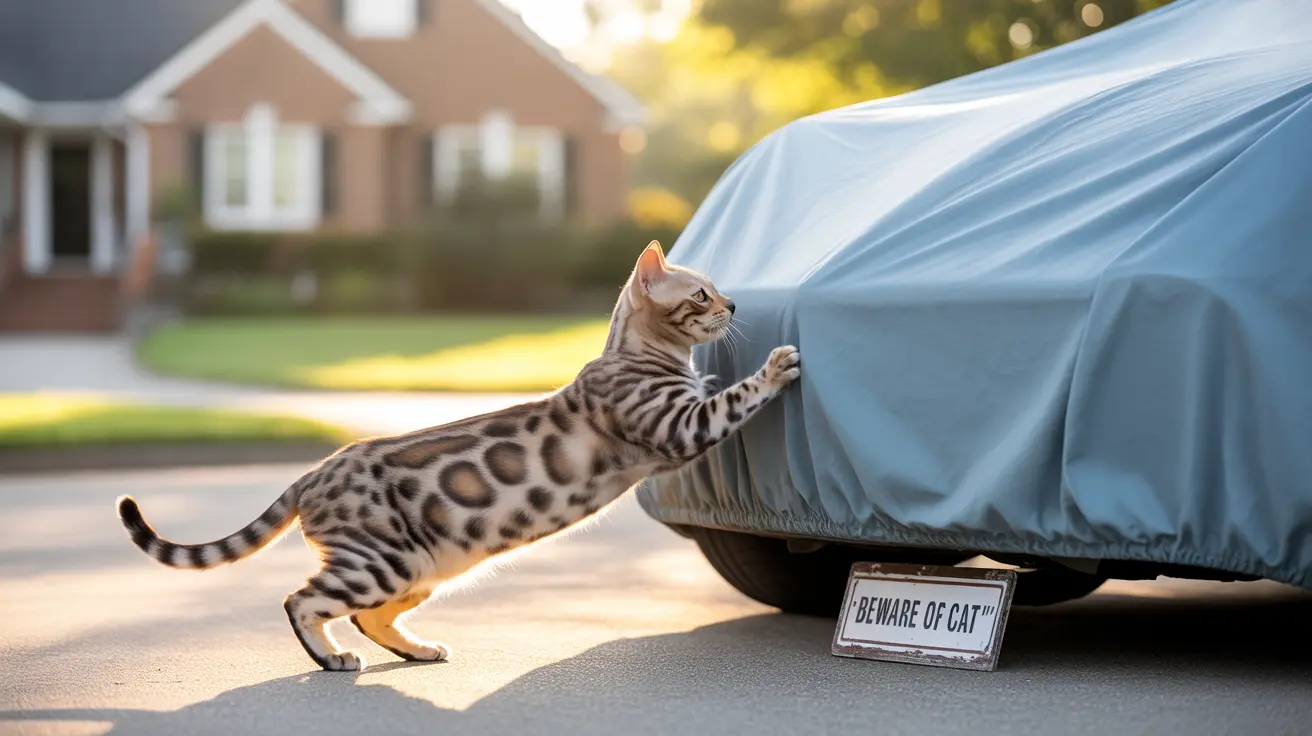Understanding Why Cats Are Attracted to Vehicles
Before implementing deterrent strategies, it's crucial to understand what makes cars so appealing to our feline friends. Cars retain engine heat, providing warm spots that are particularly attractive during cold weather. Additionally, vehicles offer shelter from the elements and predators, making them ideal hiding spots for both domestic and feral cats.
Effective Physical Deterrents
Using Protective Covers and Barriers
One of the most reliable methods to protect your vehicle is using a high-quality car cover. These covers not only prevent direct contact between cats and your car's surface but also eliminate the appealing smooth texture that cats love to rest on. Choose a cover that's weatherproof and secure it properly to prevent it from becoming a makeshift hammock.
Creating a Safe Distance
Consider installing motion-activated sprinklers or lights near your parking area. These harmless deterrents startle cats without causing them distress, teaching them to avoid the area. You can also strategically place physical barriers like lattice fencing or protective netting around your parking space.
Natural and Chemical-Free Solutions
Safe Scent Deterrents
Cats have a highly developed sense of smell and naturally avoid certain scents. You can create a deterrent barrier using:
- Coffee grounds scattered around your parking area
- Citrus peels or essential oils (properly diluted)
- Plant-based commercial repellents
- Diluted white vinegar spray (apply to surrounding ground, never directly on your car)
Environmental Modifications
Make the area around your car less appealing by:
- Removing potential food sources
- Keeping the area well-lit at night
- Maintaining a clean and debris-free parking space
- Installing gravel or rough surfaces that cats find uncomfortable to walk on
Prevention and Safety Measures
Develop good habits to protect both your car and any curious cats:
- Always check under your car and hood before starting the engine
- Tap your hood or honk briefly before starting your car
- Park in a garage whenever possible
- Consider installing an ultrasonic deterrent device
Community-Based Solutions
Address the root cause by working with your community:
- Support local TNR (Trap-Neuter-Return) programs
- Collaborate with neighbors on unified deterrent strategies
- Report stray cat populations to local animal welfare organizations
- Consider providing alternative shelter options for neighborhood cats
Frequently Asked Questions
Why do cats like to rest on car hoods and roofs?
Cats are attracted to car hoods and roofs because these surfaces retain warmth from the engine and sun. Additionally, elevated surfaces provide cats with vantage points to observe their surroundings while feeling safe from predators.
What are the safest and most effective ways to keep cats off my car without harming them?
The safest and most effective methods include using car covers, motion-activated deterrents, and providing alternative warm shelters. Physical barriers and commercial pet deterrent sprays are also humane and effective solutions.
Can using cayenne pepper, citrus peels, or vinegar actually deter cats from climbing on my car?
Yes, these natural deterrents can be effective when used properly. However, they must be reapplied regularly and should never be applied directly to your car's surface. Always use diluted solutions and apply them to surrounding areas only.
How can I protect my car's paint and engine bay from damage caused by cats?
The best protection comes from combining preventive measures: using a car cover, checking your engine bay regularly, parking in a garage when possible, and implementing deterrent strategies around your parking area.
Are ultrasonic cat repellents or car covers really effective at preventing cats from settling on vehicles?
Both methods can be effective, especially when used together. Quality car covers provide a physical barrier, while ultrasonic devices emit high-frequency sounds that cats find unpleasant. However, some cats may become accustomed to ultrasonic deterrents over time.
Conclusion
Keeping cats off your car requires a multi-faceted approach combining physical barriers, deterrents, and community involvement. By implementing these humane solutions and maintaining consistency in their application, you can effectively protect your vehicle while ensuring the safety and well-being of our feline friends.






